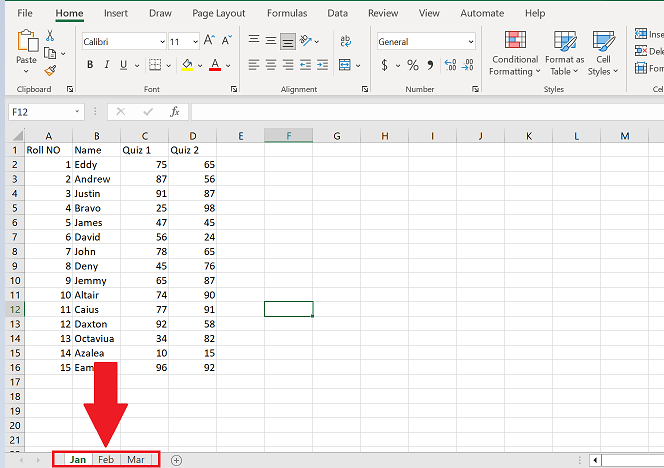5 Ways to Add Multiple Sheets in Excel Easily

In the realm of data management and analysis, Microsoft Excel stands out as a versatile tool capable of handling extensive datasets through its robust functionalities. One of its core features is the ability to work with multiple sheets within a single workbook, which can significantly streamline your work when dealing with different sets of data or aspects of a project. Let's delve into five easy ways to add sheets in Excel, enhancing your productivity and data organization skills.
1. Manual Sheet Addition

The simplest way to add a new sheet is by:
- Clicking the “+” icon at the bottom of the workbook.
- Right-clicking any sheet tab and selecting “Insert” from the context menu.
💡 Note: This method offers a straightforward approach ideal for adding sheets one at a time.
2. Using Keyboard Shortcuts

To accelerate your workflow, consider using these keyboard shortcuts:
- Windows: Use Shift + F11 to insert a new sheet.
- Mac: Use Fn + Shift + F11 for the same function.
📝 Note: These shortcuts provide a quick and efficient way to add sheets when you’re deeply focused on your work.
3. Creating Sheets via Excel VBA

Using Visual Basic for Applications (VBA) can automate the process of adding sheets:
- Open the VBA editor by pressing Alt + F11.
- Insert a new module (Insert > Module) and write the following code:
Sub AddNewSheet() Worksheets.Add ActiveSheet.Name = “NewSheet” End Sub - Run the macro from the “Developer” tab or by using F5 in the VBA editor.
🚀 Note: VBA is an advanced feature for those looking to customize Excel further, enabling automation of repetitive tasks.
4. Duplicating Sheets

Duplicating existing sheets can save time, especially if they contain common data or formatting:
- Right-click the sheet tab you want to copy, then select “Move or Copy…”
- Choose the location in the dialog box, make sure the “Create a copy” checkbox is selected, and click “OK.”
📋 Note: This method retains formatting and formulas, making it useful for creating template sheets quickly.
5. Adding Sheets in Bulk with Excel VBA

If you need to add multiple sheets at once, VBA can simplify this task:
- In VBA editor, insert this code into a new module:
Sub AddMultipleSheets() Dim i As Integer For i = 1 To 5 Worksheets.Add After:=Worksheets(Worksheets.Count) ActiveSheet.Name = “Sheet” & i Next i End Sub - Execute the macro to add 5 sheets with numbered names.
Customize the number of sheets by modifying the “5” in the loop counter.
🔗 Note: This macro is perfect for when you’re setting up a workbook with multiple, similar sheets.
Summing up, Excel’s versatility in managing sheets is invaluable for professionals dealing with complex datasets. These methods offer varying degrees of automation and efficiency in adding multiple sheets to your workbooks, ensuring your data is well-organized and accessible. Now, you’re equipped to handle any task requiring multiple sheets, be it basic data entry or complex data analysis.
How can I add more than one sheet at once?

+
You can use VBA to automate adding multiple sheets by following the steps mentioned under “Adding Sheets in Bulk with Excel VBA.”
Can I insert a sheet in a specific position?

+
Yes, when using the “Move or Copy” feature, you can specify where you want the new sheet to appear relative to existing sheets.
What’s the benefit of using VBA for sheet management?

+
VBA allows automation and customization, which is particularly useful for repetitive tasks or when working with complex datasets.